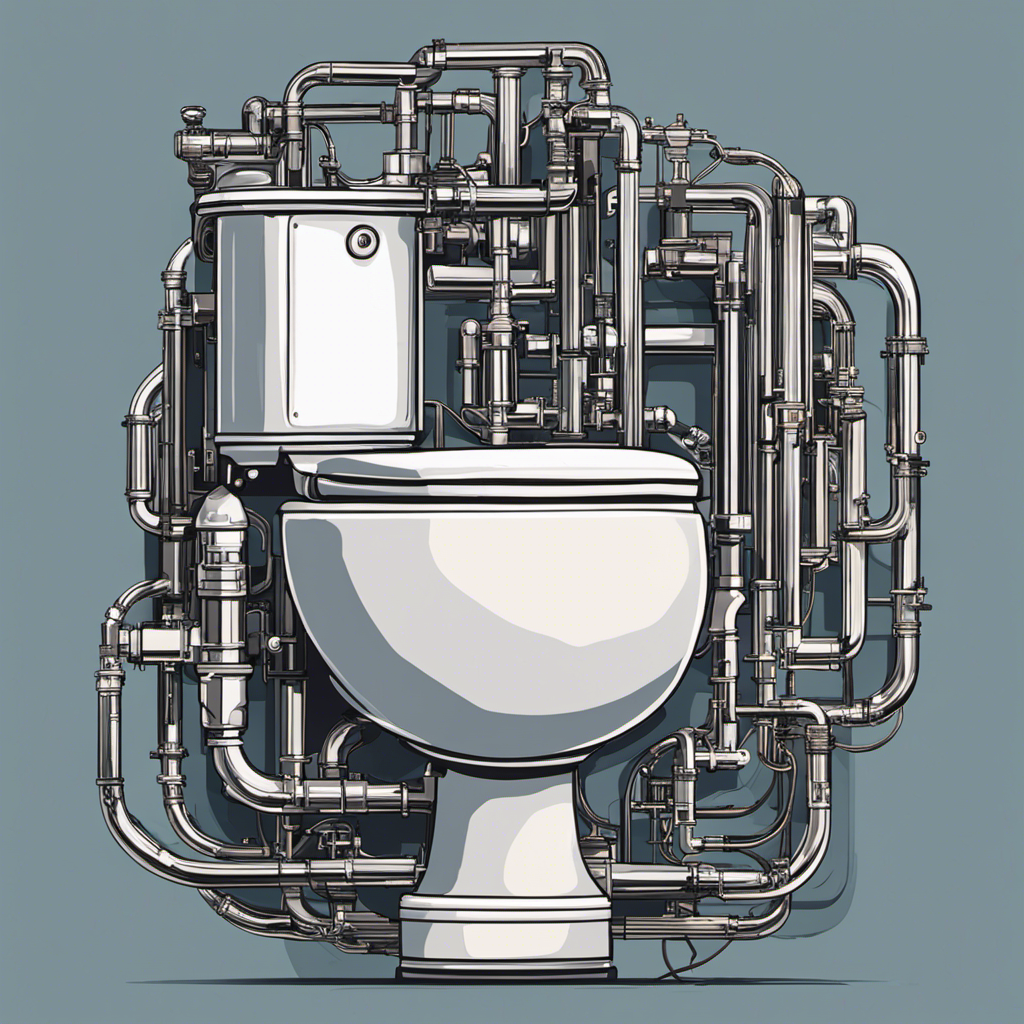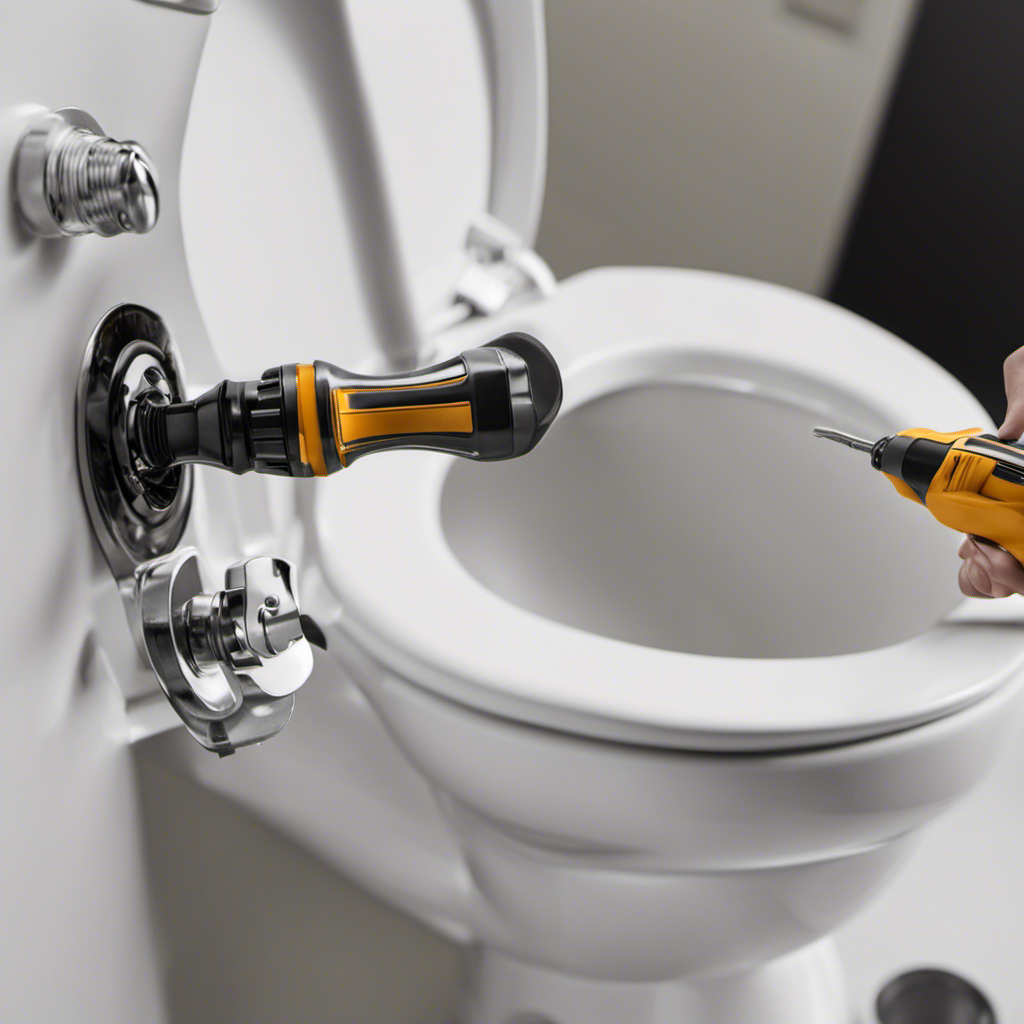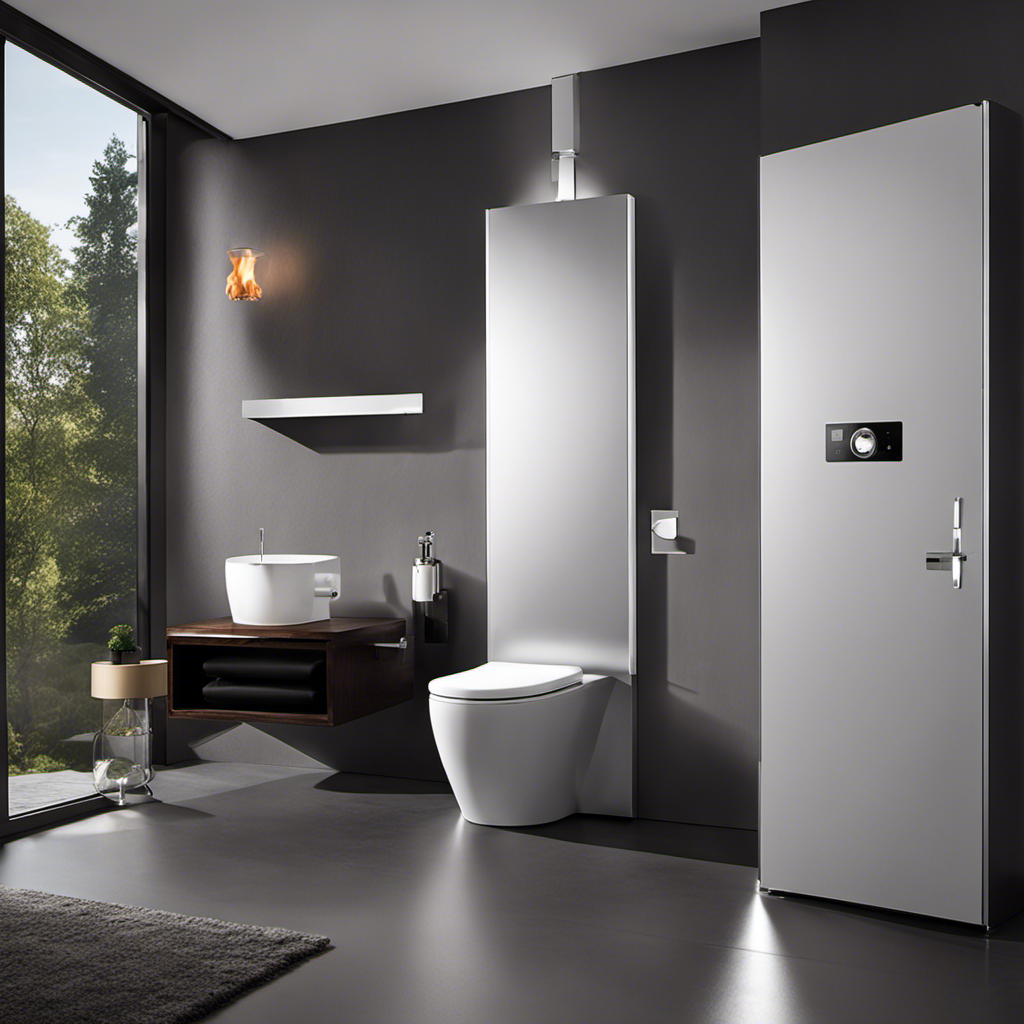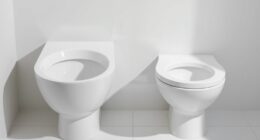Like a never-ending symphony, my toilet’s incessant flushing has become an unwelcome background noise in my daily routine. But fear not, dear reader, for I have embarked on a quest to uncover the secrets behind this perplexing phenomenon.
In this article, I will delve into the common culprits that cause toilets to flush continuously. From the elusive flapper valve to the misbehaving flush handle, join me as we navigate the intricate inner workings of our porcelain throne.
Key Takeaways
- The flapper valve is a crucial component in the toilet tank that controls water flow during flushing.
- Water pressure problems, both high and low, can cause continuous flushing and disrupt the normal flushing mechanism.
- Regular maintenance and inspection of the flapper valve are necessary to ensure its proper functioning.
- The float ball and fill valve play important roles in regulating water level and preventing overflow, and their proper maintenance is essential for smooth toilet operation.
Common Reasons for Continuous Flushing
One common reason for continuous flushing is a faulty flapper valve. The flapper valve is a key component in the toilet tank that allows water to flow from the tank into the bowl when the flush handle is pressed. However, if the flapper valve is not functioning properly, it can cause the toilet to continuously flush. This can lead to a toilet tank overflow, resulting in water damage and increased water bills.
Another possible cause for continuous flushing is water pressure problems. If the water pressure is too high, it can cause the flapper valve to remain open, causing the toilet to continuously flush. On the other hand, if the water pressure is too low, it may not provide enough force to close the flapper valve properly, also resulting in continuous flushing.
Understanding the Flapper Valve
To understand the flapper valve, you need to check if it is properly sealing the water in the tank. The flapper valve is a critical component in the toilet tank that controls the flow of water during flushing. If it is not functioning correctly, it can lead to continuous flushing or water leakage, causing inconvenience and wasting water.
Here is a step-by-step guide to flapper valve maintenance:
-
Inspect the flapper valve: Check for any signs of wear and tear, such as cracks or decayed rubber. Make sure it is properly attached and aligned.
-
Clean the flapper valve: Remove any debris or mineral buildup that may be interfering with its proper sealing. Use a soft brush and mild detergent if necessary.
-
Replace the flapper valve: If the flapper valve is damaged beyond repair, it is essential to replace it with a new one. Ensure that you choose the correct size and type for your toilet model.
The Role of the Float Ball
The float ball is an essential component in the toilet tank that regulates the water level and prevents overflow. It works in conjunction with the fill valve to control the amount of water that enters the tank after each flush.
Proper maintenance of the float mechanism is crucial to ensure the smooth operation of the toilet. Regular inspection and cleaning of the float ball and its associated parts can help prevent issues such as sticking or malfunctioning.
Additionally, it is important to adjust the water level correctly to prevent excessive flushing or inadequate flushing. An improper water level can lead to a constant running toilet or a weak flush.
Troubleshooting the Fill Valve
When troubleshooting the fill valve, it’s important to check for any obstructions or debris that may be preventing proper water flow. Here are some steps to follow:
- Inspect the fill valve for any visible signs of damage or wear.
- Turn off the water supply to the toilet and flush it to drain the tank.
- Disconnect the water supply line from the fill valve and carefully remove the fill valve from the tank.
To adjust the water level:
- Look for a water level adjustment screw on the fill valve and turn it clockwise to decrease the water level or counterclockwise to increase it.
- Reinstall the fill valve into the tank and reconnect the water supply line.
- Turn on the water supply and check if the water level is adjusted to your desired level.
If adjusting the water level does not solve the issue, it may be necessary to replace the fill valve altogether.
Potential Issues With the Flush Handle
If the flush handle is not working properly, it could indicate potential issues with the toilet’s flushing mechanism. This can be a frustrating problem to deal with, but understanding the possible causes can help you troubleshoot and resolve the issue. One common issue is a broken or loose flush handle. This can be easily fixed by tightening or replacing the handle. Another possible cause is a faulty flapper valve. The flapper valve controls the release of water from the toilet tank into the bowl. If it is not sealing properly, water can continuously leak into the bowl, causing the toilet to keep flushing. Adjusting or replacing the flapper valve can solve this problem. Finally, insufficient water pressure in the toilet tank can also lead to continuous flushing. This can be resolved by checking and adjusting the water pressure in your home’s plumbing system.
| Toilet Flushing Issues | Possible Causes |
|---|---|
| Broken or loose flush handle | Tighten or replace handle |
| Faulty flapper valve | Adjust or replace valve |
| Insufficient water pressure in toilet tank | Check and adjust water pressure in plumbing system |
Conclusion
In conclusion, understanding the various components of your toilet can help troubleshoot the issue of continuous flushing. Just like a well-oiled machine, a toilet relies on the coordination of the flapper valve, float ball, and fill valve to function properly.
By identifying potential problems with these parts, you can fix the issue and restore the tranquility of your bathroom.
Remember, a toilet is like a symphony orchestra, with each part playing its unique role in creating a harmonious flushing experience.
So, grab your plumber’s hat and get ready to conduct the perfect performance!










